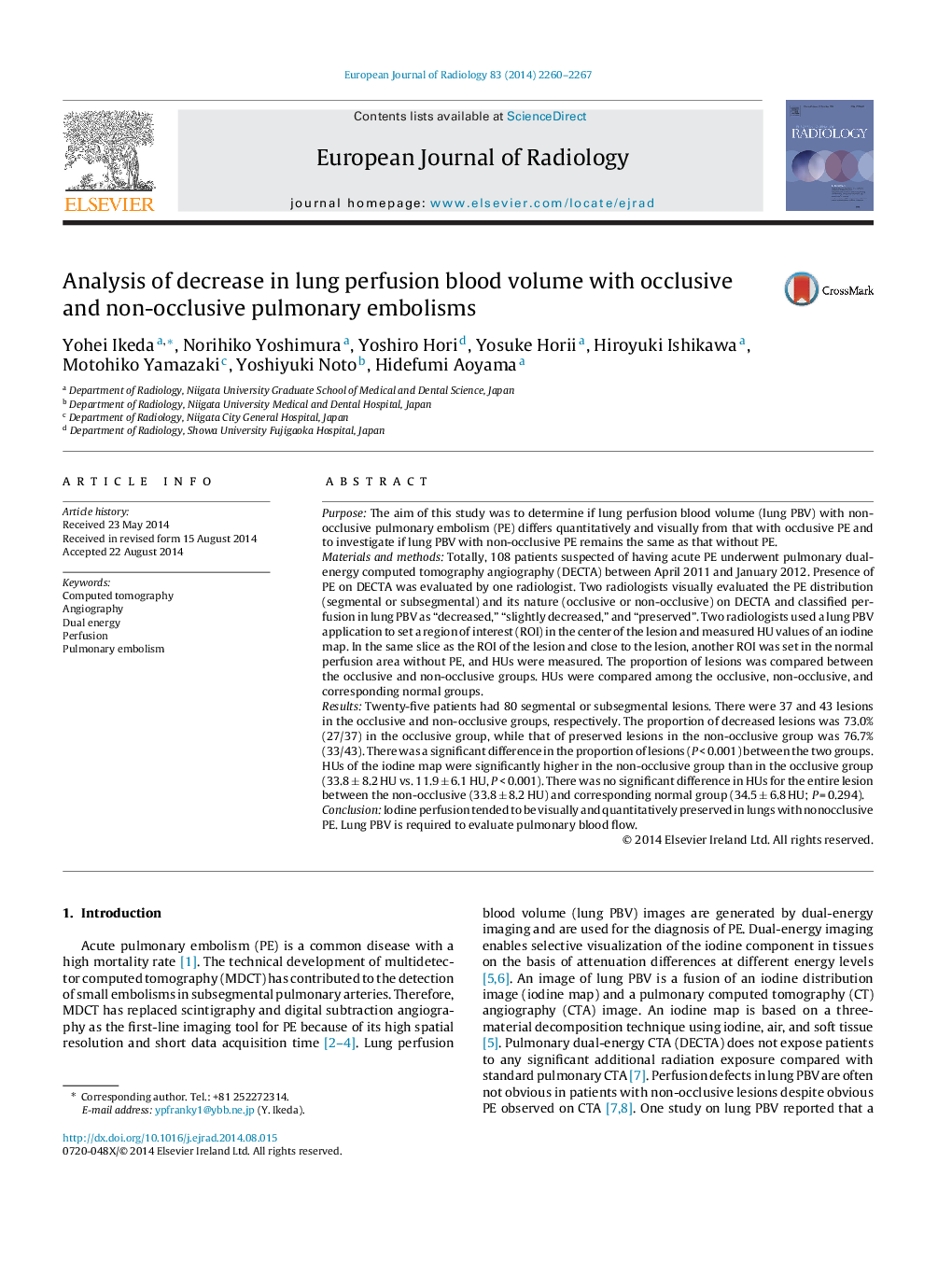| Article ID | Journal | Published Year | Pages | File Type |
|---|---|---|---|---|
| 4225299 | European Journal of Radiology | 2014 | 8 Pages |
•The proportion of preserved PE lesions in the non-occlusive group was 76.7% (33/43).•HUs of the iodine map were significantly higher in the non-occlusive group than in the occlusive group.•There was no significant difference in HUs between the non-occlusive and corresponding normal group.
PurposeThe aim of this study was to determine if lung perfusion blood volume (lung PBV) with non-occlusive pulmonary embolism (PE) differs quantitatively and visually from that with occlusive PE and to investigate if lung PBV with non-occlusive PE remains the same as that without PE.Materials and methodsTotally, 108 patients suspected of having acute PE underwent pulmonary dual-energy computed tomography angiography (DECTA) between April 2011 and January 2012. Presence of PE on DECTA was evaluated by one radiologist. Two radiologists visually evaluated the PE distribution (segmental or subsegmental) and its nature (occlusive or non-occlusive) on DECTA and classified perfusion in lung PBV as “decreased,” “slightly decreased,” and “preserved”. Two radiologists used a lung PBV application to set a region of interest (ROI) in the center of the lesion and measured HU values of an iodine map. In the same slice as the ROI of the lesion and close to the lesion, another ROI was set in the normal perfusion area without PE, and HUs were measured. The proportion of lesions was compared between the occlusive and non-occlusive groups. HUs were compared among the occlusive, non-occlusive, and corresponding normal groups.ResultsTwenty-five patients had 80 segmental or subsegmental lesions. There were 37 and 43 lesions in the occlusive and non-occlusive groups, respectively. The proportion of decreased lesions was 73.0% (27/37) in the occlusive group, while that of preserved lesions in the non-occlusive group was 76.7% (33/43). There was a significant difference in the proportion of lesions (P < 0.001) between the two groups. HUs of the iodine map were significantly higher in the non-occlusive group than in the occlusive group (33.8 ± 8.2 HU vs. 11.9 ± 6.1 HU, P < 0.001). There was no significant difference in HUs for the entire lesion between the non-occlusive (33.8 ± 8.2 HU) and corresponding normal group (34.5 ± 6.8 HU; P = 0.294).ConclusionIodine perfusion tended to be visually and quantitatively preserved in lungs with nonocclusive PE. Lung PBV is required to evaluate pulmonary blood flow.
